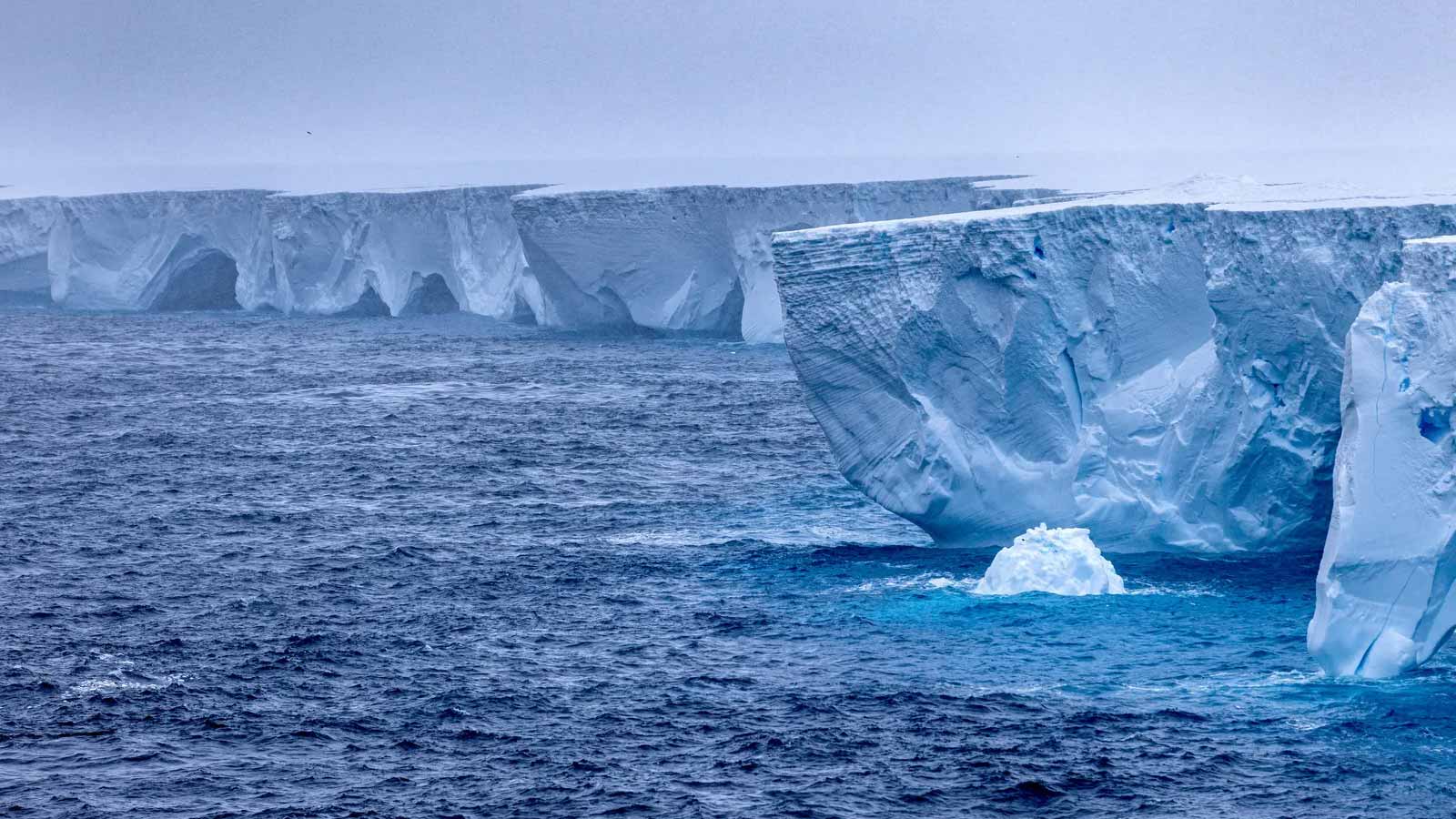Under starlit waves, a monster iceberg drifts toward South Georgia, promising an unforgettable clash of ice and island life.
A Colossal Wake-Up Call from a monster iceberg
Picture this: a gleaming wall of ice so immense it dwarfs skyscrapers, slipping soundlessly through inky waters. This monster iceberg, a trillion-ton relic from Antarctica, broke away in 1986, its cliffs once reaching 400 meters and out-sizing some countries. For decades it sat nailed to the Weddell Sea floor, like a frozen guardian standing watch. Lately, warmer currents have pried it loose, setting it on a slow-motion voyage. From space, it looks almost haunted, a drifting citadel of ice heading for lonely coasts. Above, seabirds wheel in gossiping flocks, their cries echoing against that jagged skyline. Sailors trade hushed rumors of its glacial march, while scientists, eyes glued to screens, track every wobble and shift. They sense there’s more here than a drifting block of ice, it’s a living archive of Earth’s changing climate, written in centuries of frozen layers.
Goodbye Pepsi: Costco makes a major decision that completely changes its strategy with sugary drinks
How detonating a nuclear bomb could protect planet Earth
Decades-Old Beast
This drifting giant began life beneath Antarctica’s frigid sky, accumulating centuries of snowfall. Each layer compressed into solid ice, capturing tiny air bubbles of Earth’s past. Over time, the mass pressed outward until it cracked free. That first calving sent a ripple through chill waters. Named A23a, this iceberg once floated freely before grounding for nearly forty years. It sat motionless, grinding against submarine ridges like a hulking glacier on wheels. Warming seas nudged it eastward, then southeast. Now it glides past islands and deep canyons. Satellite data shows its outline shifting as edges crumble. Tiny fragments peel away like bits of chalk from a schoolboard. Even in pieces, this ancient block carries weight. Currents tug at its base, sculpting new channels and hollows. Sunlight warms its surface, carving pools of blue on stark white ice. I find it mesmerizing like watching history melt before your eyes.
Wildlife on the Brink
South Georgia teems with life: penguins bob on waves, elephant seals haul onto beaches. They’ve thrived here for centuries, untouched by most threats. Until now. When a monster iceberg grounds against these coasts, it can wall off crucial passages. Imagine a colony of King penguins cut off from the sea by a looming ice barricade. They’d huddle helplessly on snowless shores, hunger driving them into long, desperate treks. In past groundings, thousands starved before ice shifted. Seal pups missed feeding windows, and seabirds found rookeries buried under slabs of ice. Researchers scan beaches by drone, mapping where penguins could be trapped. Locals worry about fisheries too, if currents change around that floating mass. No one underestimates the fragile balance here. Animal behavior shifts at the merest hint of obstruction. Every stranded seal reminds us how narrow the margin can be.
Monster iceberg : Breaking Apart, Floating On
Even the grandest iceberg can’t resist time and tide. As this one drifts north, cracks spider across its surface. Warm water seeps into crevices, prying them open. Chunks detach with a thunderous crack and tumble into waves. Each fragment becomes its own drifting hazard. Ships that once skirted around the main block now face a scattered minefield of ice. Sailors chart their paths carefully, eyes peeled for smaller colliders. Meanwhile, oceanographers study melt rates, hoping to gauge how fast polar ice can vanish. Observing this monster iceberg fracture feels like watching a slow-motion grand finale. The quiet prelude gives way to staccato pops and splashes. Ice that once stood firm now dances on liquid glass. Windows of satellite images catch the moment blue-green meltwater rivers snaking across the surface. In those patterns, you see a world in transition. People around the globe follow the updates, transfixed by both beauty and risk. Researchers debate whether this iceberg’s breakup signals faster ice loss overall. It’s a scene both mesmerizing and unsettling.
Buys a coal mine for $2 million and discovers metals worth up to $36 billion
If you remember these 10 moments from decades ago, your memory is sharper than most in their 70s
Watching from Beyond
Even if this hulking iceberg never bumps into a beach, its quiet voyage sends ripples halfway around the world. People swap jaw-dropping photos online, marveling at something so vast and ancient. In classrooms, kids doodle its jagged edges, imagining secret ice kingdoms. Back home, hopeful documentary trailers pop up, urging us to pause and watch Earth’s slow dance unfold. Meanwhile, researchers huddle over screens, comparing this iceberg’s wanderings with those of its long-forgotten predecessors, tracing invisible currents like detectives at work. Temperature graphs glow in the dim lab light, wind maps shift under expert fingers, and somehow it all feels strangely reassuring, tracking a lonely iceberg from our living rooms, we find a connection to places we’ll never visit. In that silent drift, science and wonder collide, reminding us how small our stories are and how much we rely on this planet’s heartbeat.
